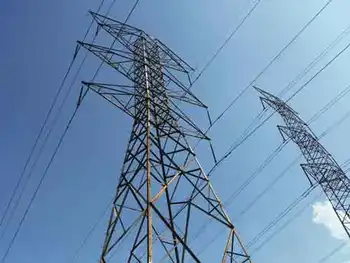Governors commit to energy efficiency, clean generation
WASHINGTON, D.C. - States are leading actions to make clean power generation and energy efficiency an American reality, according to the nation's governors who convened today in Kansas City, Kan. for the "State Summit on Clean Power and Efficiency," sponsored by the National Governors Association's Securing a Clean Energy Future Initiative (SCEF Initiative).
"The cleanest and cheapest energy is the energy we do not use," said NGA Chair Minnesota Gov. Tim Pawlenty. "Studies show that 80 percent of the projected growth in electricity demand could be offset by energy efficiency improvements. States and governors are taking action and are leading the way to a safer, cleaner and more independent energy future for our nation."
During an opening roundtable, governors discussed progress and challenges in their home states to advance clean power generation, transmission, energy efficiency and conservation, and reduce the effects of climate change. Governors highlighted the critical nexus between using renewable sources combined with traditional sources of power generation to meet the country's escalating energy needs.
"Our country's demand for electricity is projected to grow by almost 25 percent between now and 2030," said Kansas Gov. Kathleen Sebelius, co-chair of the SCEF Initiative. "Governors are making dynamic commitments and, where appropriate, bold decisions to secure a clean energy future for all Americans."
"Americanizing our energy system will require a blend of new, renewable sources of energy and traditional – but cleaner – sources of energy, as well as effective energy conservation," said North Dakota Gov. John Hoeven. "In fact, we in North Dakota are just completing a comprehensive, three-year energy audit for our capitol complex, which has reduced our energy consumption by 21 percent, from $700,000 to $550,000 a year."
At a press conference following the roundtable, governors were joined by Matt Kitsler, senior vice president of sustainability for Wal-Mart, to announce the states selected to receive clean energy audits as part of the NGA/Wal-Mart 'Greening State Capitols' partnership.
"The Greening State Capitols partnership shows how governments and the private sector can work together to address issues of importance to all Americans, like increasing energy efficiency and decreasing greenhouse gas emissions," said Matt Kistler, senior vice president of sustainability for Wal-Mart. "Through this cooperative effort, Wal-Mart has the opportunity to partner with states across the country to help secure our nation's energy future, improve efficiency and work to ensure a cleaner environment for generations to come."
The 'Greening State Capitols' partnership will provide governors an opportunity to reduce the overall energy consumption of their state capitol complexes by having a team of energy experts conduct a clean energy audit of the facility. Wal-Mart will send engineering experts to 20 state capitol complexes throughout 2008 and 2009 with the goal of identifying energy efficiency improvements that will provide a return on investment within five years. In addition, the experts will demonstrate the anticipated cost savings and carbon dioxide reductions each state could experience by implementing the recommended improvements.
This is the third in a series of national summits held as part of the NGA Chair's SCEF Initiative. The initiative enlists the efforts of all governors to make our nation a global leader in energy efficiency, clean energy technology, energy research and the use of alternative fuels. The initiative focuses both on what states can do in the near-term to address our energy challenges as well as what actions must be taken to steer the country towards a cleaner and more secure energy future.
Related News

Ontario rolls out ultra-low electricity rates
TORONTO - A million households can opt into a new ultra-low overnight electricity rate offered by the Ministry of Energy, but that's just a fraction of customers in Ontario.
Only eight of the 61 provincial power utilities will offer the new rate on the May 1 launch date. The rest have up to six months to get on board.
That means it will be available to 20 percent of the province's five million electricity customers, the Ministry of Energy confirmed to CBC News.
The Ford government's new overnight pricing was pitched as a money saver for Ontarians, undercutting its existing overnight rate from…




